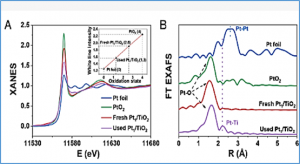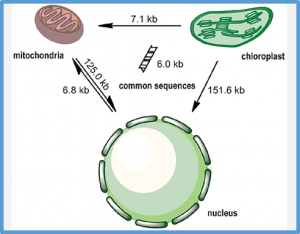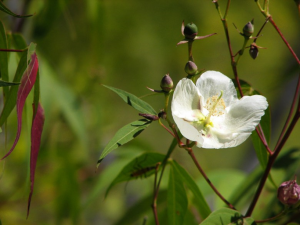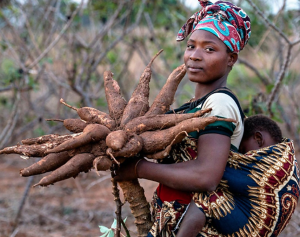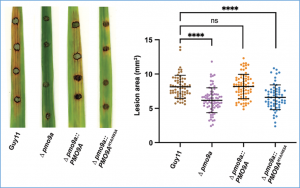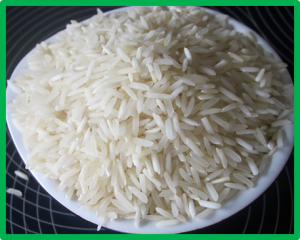Eukaryotic genomes are large and complex, and gene expression can be affected by multiple regulatory elements and their positions within the dynamic chromatin architecture. Transposable elements are known to play important roles in genome evolution, yet questions remain as to how transposable elements alter genome structure and affect gene expression. Previous studies have shown that genome rearrangements can be induced by Reversed Ends Transposition involving termini of Activator and related transposable elements in maize and other plants.
Nitrogen oxide (NOx) pollution presents a severe threat to the environment and human health. Catalytic reduction of NOx with H2 using single-atom catalysts poses considerable potential in the remediation of air pollution; however, the unfavorable process of H2 dissociation limits its practical application. Herein, we report that the in situ formation of PtTi cocatalytic sites (which are stabilized by Pt–Ti bonds) over Pt1/TiO2 significantly increases NOx conversion by reducing the energy barrier of H2 activation.
Here, through analyzing the polymorphisms of these organelles in 2580 soybean accessions including 107 wild soybeans, we found that the chloroplast genome is more variable than the mitochondrial genome in terms of variant density. Consistent with this, more haplotypes were found in the chloroplast genome (44 haplotypes) than the mitochondrial genome (30 haplotypes). These haplotypes were distributed extremely unevenly with the top two haplotypes (CT1 and CT2 for chloroplasts, MT1 and MT2 for mitochondria)
Cotton can undergo low-temperature stress at the seedling emergence stage, which adversely affects growth and yield; however, the regulatory mechanism underlying cold tolerance remains nebulous. Here, we analyze the phenotypic and physiological parameters in 200 accessions from 5 ecological distributions under constant chilling (CC) and diurnal variation of chilling (DVC) stresses at the seedling emergence stage.
Cytosine DNA methylation is involved in transposable element (TE) silencing, imprinting and X‐chromosome inactivation. Plant DNA methylation is mediated by MET1 (mammalian DNMT1), DRM2 (mammalian DNMT3) and two plant‐specific DNA methyltransferases, CMT2 and CMT3. To dissect the haplotype‐resolved DNA methylome of cassava, we conducted methylome studies in two haplotype genome‐resolved accessions of cassava (TME7 and TME204) using whole‐genome bisulfite sequencing (WGBS) and enzymatic methyl‐seq (EM‐seq), respectively.
Characterization of a unique polysaccharide monooxygenase from the plant pathogen Magnaporthe oryzae
Blast disease in cereal plants is caused by the fungus Magnaporthe oryzae and accounts for a significant loss in food crops. At the outset of infection, expression of a putative polysaccharide monooxygenase (MoPMO9A) is increased. MoPMO9A contains a catalytic domain predicted to act on cellulose and a carbohydrate-binding domain that binds chitin. A sequence similarity network of the MoPMO9A family AA9 showed that 220 of the 223 sequences in the MoPMO9A-containing cluster of sequences have a conserved unannotated region with no assigned function
Seeds are essential for plant reproduction, survival, and dispersal. Germination ability and successful establishment of young seedlings strongly depend on seed quality and on environmental factors such as nutrient availability. In tomato (Solanum lycopersicum) and many other species, seed quality and seedling establishment characteristics are determined by genetic variation, as well as the maternal environment in which the seeds develop and mature.
Soybean isoflavones are secondary metabolites of great interest owing to their beneficial impact on human health. Herein, we profiled the seed isoflavone content by HPLC in 1551 soybean accessions grown in two locations for two years and constructed two extreme pools with high (4065.1 µg g−1) and low (1427.23 µg g−1) isoflavone contents to identify candidate genes involved in isoflavone biosynthesis pathways using bulk segregant analysis sequencing (BSA-seq) approach.
Fragrance is one of the most important quality traits for breeding in rice. The natural aroma substance 2-acetyl-1-pyrroline (2-AP) is a key fragrance compound among over 200 volatiles identified in fragrant rice. In addition to rice, there are other plant species that contain a germplasm that naturally produces a fragrant aroma. These other plant species all have lower activity levels of the enzyme BETAINE ALDEHYDE DEHYDROGENASE 2 (BADH2).
Yellow seed is a valuable breeding trait that can be potentiality applied for improving seed quality and oil productivity in oilseed Brassica crops. However, only few genes for yellow seed have been identified in B. rapa. We previously identified a minor quantitative trait locus (QTL), qSC3.1, for seed coat color on chromosome A03 in B. rapa. In order to isolate the seed coat color gene, a brown-seeded chromosome segment substitution line, CSSL-38, harboring the qSC3.1,


 Curently online :
Curently online :
 Total visitors :
Total visitors :

